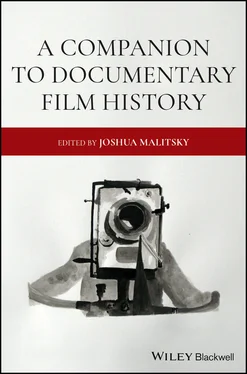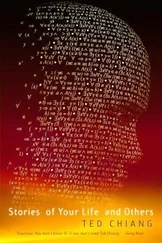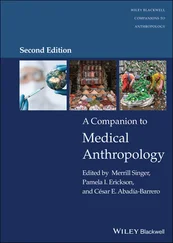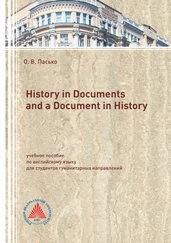Writing Documentary History
The history of documentary has often been told with a technologically determinist bent. It begins with the move from the predocumentary phase of the actuality to the classical period of documentary with the inauguration of narrative in Nanook of the North (1922) (Barsam, 1973; Barnouw, 1974). With the emergence of sound films around the 1930s, the form develops with voice‐over narration assuming the role of intertitles. The classical period sustains until approximately 1960, when the availability of portable 16 mm cameras and synchronous sound enabled a more intimate, democratic, less authoritarian model.
The more recent histories (of the last 35–40 years) are still in the process of being understood. To be sure, Direct Cinema’s claims of providing objective evidence of the world through an observational approach have been called into question across contexts and by a range of approaches. Films with reflexive and performative elements have become more common and are often highly presentational in their address, calling attention to their acts of articulation and processes of production. In so doing, they locate the truth less in the relationship between the image and reality than in the trust between filmmaker and viewer. But that’s not to say that filmmakers and viewers abandoned the possibility of documentary communicating the truth of the past (i.e. its historiographic function). As Linda Williams describes in an analysis of Errol Morris’s The Thin Blue Line , “some kinds of partial and contingent truths are nevertheless always the receding goal of the documentary tradition” (Williams, 2013: 392). In the early 2000s some scholars saw the development of this line of (postmodern) thought—the inability of the photograph or its digital replacement to serve as a guarantor of truth—as an indication that we have moved into a “post‐documentary” moment (Corner, 2000; Winston, 2013). Yet this line of thinking never matched how documentary films were being watched. Viewers consistently and penetratingly interrogate films’ truthfulness or factuality in ways that have probably changed less in the last 40 years than most expect. Indeed, with the information age, the availability of paratextual and extratextual materials (information that is in addition to critical responses to the film) increasingly shapes the judgments viewers make about the film and those involved in its production and circulation.
But if those are some broad strokes for telling the history of documentary, the vast majority of scholarship on the topic is more concerned with specific instances, whether it focuses on a filmmaker, a movement, or a geographic area. Documentary studies began to develop as subfield of Cinema and Media Studies in the 1990s in response to a number of scholars’ interest in documentary’s underlying legitimacy (Renov, 1993; Winston, 1995; Gaines and Renov, 1999; Nichols, 1991; Kahana, 2016: 723–725). The subfield is associated by many with the academic conference Visible Evidence, also the name of a book series published by University of Minnesota Press (1997–2014, since taken over by Columbia University Press) that was one of the primary publishers of monographs and anthologies on documentary topics. This included volumes on documentary’s role in nations’ histories, on subgenres of documentary (including some on “peripheral” practices such as home and amateur movies), on individual filmmakers and individual films, on documentary’s connection with political and intellectual movements, on documentary’s relationship with other media forms, and on theoretical approaches to the form ( https://www.upress.umn.edu/book‐division/series/visible‐evidence).
Other (mostly academic) presses have supported this research as well: Wallflower, which has a “Nonfictions” series, Indiana, Columbia, Oxford, and more recently California and Amsterdam have all produced books on documentary‐related topics. Academic journals are the other most significant place for the publication of historical work on documentary and nonfiction film material. Studies in Documentary Film is the only journal completely devoted to the topic, but there are fairly consistent publications in film and media‐specific journals such as Cinema Journal (now the Journal of Cinema and Media Studies), Jump Cut The Moving Image, Film History, Film Quarterly, Black Camera, Historical Journal of Film, Radio, and Television, and Screen, as well as in transdisciplinary journals focusing on critical theory, media and culture, and art criticism like Discourse, October , and Journal of Visual Culture .
This volume is designed to provide an overview of the best historical scholarship being done on documentary and nonfiction film at the present moment. Instead of selecting previously published work, however, I reached out to scholars across the globe who are doing the most innovative and rigorous work in the area. To organize this work, I have created thematic strands that I believe productively account for the dominant and emerging approaches to understanding the history of documentary film and video. I am confident that these strands will spark intellectual conversations about the material and about the historiographical approach to the material. In other words, like so many of the best documentaries themselves, I aim to produce a work that encourages careful consideration of the historical objects at hand as well as the process of object‐making that the approach entails. At some points, this is likely to be explicit. More often, however, this critical reflexivity will be evident in the creativity and meticulousness of the scholar’s approach. The thematic strands enable and encourage such critical reflexivity by creating terrain that is fertile for debate around methodology and expansive to underrepresented groups and contexts. They account for approaches that allow us to take an international and global approach. By engaging both established and developing approaches to documentary and/as nonfiction film, this volume aims to locate readers clearly in an intellectual conversation and to equip them to shape its future direction.
The volume consists of five thematic strands, each consisting of an introduction by an expert in the area and three to five essays.
Documentary Borders and Geographies
Practically from its inception, documentary has been seen as having a privileged relation to the nation. It was in the 1920s and 1930s—the period of documentary’s early maturity—that politicians started to believe cinema could influence citizens. Nonfiction filmmakers’ arguments about what cinema could and should do were often made by those working for the state. Buttressing this notion was many filmmakers’ conviction that the film camera could uniquely capture nationality, both in established forms and in emerging states. This close connection between nonfiction film and national identity came to the fore again in the 1980s and 1990s when the emergence of national cinema studies coincided with the birth of documentary studies. In recent years, however, new approaches (archival and cultural‐historical), new forms, and newly available sources have pointed to the internationalism of not only current projects but historical ones as well. As Alice Lovejoy notes, this transnational work “highlighted the importance of internationalism to documentary, and documentary to internationalism.” The essays in this section build on this principle, noting documentary’s consistent concern with borders and geographic frameworks but also highlighting the extraordinary variety of geographies under consideration in this research. They do so across scale, moving from the local town level in the United States to regional/supranational dynamics in the Soviet Union to unsponsored challenges to colonialism in French West Africa to the reception of Western documentary film theory in Japan. In addition to illuminating a range of conceptual issues related to the geographical, the essays in this section are all concerned with a particular era in documentary, from the end of World War II to the mid to late 1950s, a significantly understudied period in nonfiction film history.
Читать дальше












